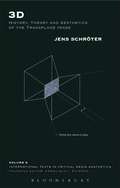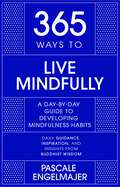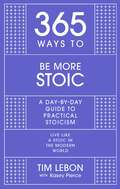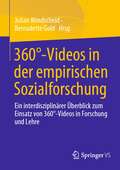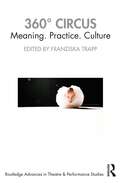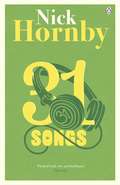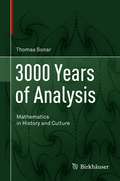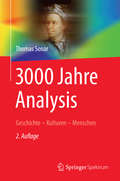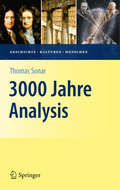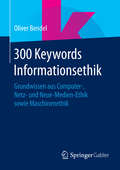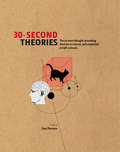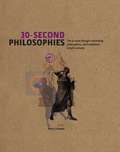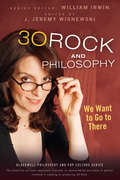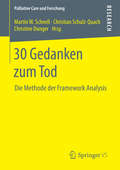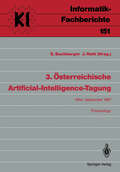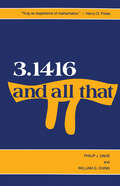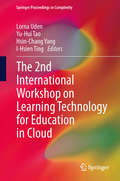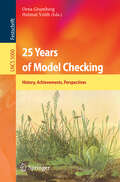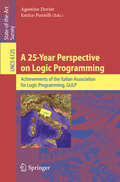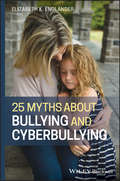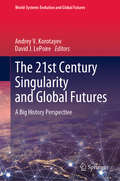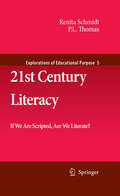- Table View
- List View
3D: History, Theory and Aesthetics of the Transplane Image (International Texts in Critical Media Aesthetics)
by Jens SchröterThere is a blind spot in recent accounts of the history, theory and aesthetics of optical media: namely, the field of the three-dimensional, or trans-plane, image. It has been widely used in the 20th century for very different practices - military, scientific and medical visualization - precisely because it can provide more spatial information. And now in the 21st century, television and film are employing the method even more. Appearing for the first time in English, Jens Schroeter's comprehensive study of the aesthetics of the 3D image is a major scholarly addition to this evolving field. Citing case studies from the history of both technology and the arts, this wide-ranging and authoritative book charts the development in the theory and practice of three-dimensional images. Discussing and analyzing the transformation of the socio-cultural and technological milieu, Schroeter has produced a work of scholarship that combines impressive historical scope with contemporary theoretical arguments.
365 Ways to Live Mindfully: A Day-by-day Guide to Mindfulness (365 Series)
by Pascale Engelmajer365 WAYS TO LIVE MINDFULLY introduces simple ways to develop mindfulness habits, such as identifying personal values, developing related goals and setting out to achieve them, through short concepts, ideas, prompts, profiles, practices and exercises, all based on Buddhist thought and practices.The bite-size entries introduce different Buddhist traditions such as mindfulness, compassion, loving-kindness and karma, and profile inspiring past and present figures to guide you towards taking small, impactful steps at your own pace to increase your mindfulness across all aspects of your life and experience noticeable changes that will have a big impact.
365 Ways to be More Stoic: A day-by-day guide to practical stoicism
by Tim LebonHAPPINESS, SERENITY AND FULFIMENT ARE ALL WITHIN YOUR CONTROL365 WAYS TO BE MORE STOIC is a full year's worth of daily inspiration, tools, stories, actions, and rituals that will guide you to a meaningful life, filled with happiness. It is a simple, list-driven, practical guide that will allow you to immediately begin putting Stoic wisdom into practice in your daily life. Each short chapter makes Stoicism fun to read about and easily digestible, presenting ideas in engaging, bite-size chunks.Immerse yourself in stoicism right from the first chapter, through prompts, concepts, challenges, inspiration, quotes, examples, quizzes and case-studies. You'll learn to navigate through the controllable and inevitable. You'll develop constructive ways to handle frustration, adversity and even your own mortality. You'll learn habit-forming strategies, pick up helpful concepts, and uncover tips for lasting change. This fun and engaging manual will help you live like a Stoic in the modern world. 365 WAYS TO BE MORE STOIC focuses on the small stuff you can do every day to live a happier and wiser life. Because when you get the little things right, the big things follow.
360°-Videos in der empirischen Sozialforschung: Ein interdisziplinärer Überblick zum Einsatz von 360°-Videos in Forschung und Lehre
by Julian Windscheid Bernadette GoldMit dem vorliegenden Buch wird der Versuch unternommen, eine interdisziplinäre Auseinandersetzung mit dem Thema 360°-Videos in Forschung und Lehre aus Sicht verschiedener sozialwissenschaftlicher Disziplinen anzuregen. Es bietet Informationen zur Erstellung von 360°-Videos, zu deren Einsatz in Forschung und Lehre sowie beispielhafte Lehr-Lern-Szenarien mit 360°-Videos in der Hochschuldidaktik. Die Videografie gilt in weiten Teilen der empirischen Sozialforschung als vielversprechendes Mittel der Datengewinnung und erfreut sich auch in der universitären Lehre zunehmender Beliebtheit. Die Anwendung von und der Umgang mit 360°-Videos ist in dieser Diskussion bislang jedoch erst ansatzweise thematisiert worden. Dabei kann diese Technologie einen immensen Fortschritt für die wissenschaftliche Forschung und Lehre bedeuten: Der Bildausschnitt kann frei gewählt werden und mittels einer VR-Brille können die Beobachtenden das Geschehen sogar „hautnah“ miterleben. Gleichzeitig stellen 360°-Videos Forschende und Lehrende vor neue Herausforderungen. Diese beginnen bereits bei der Produktion des Materials und resultieren in der Frage, wie diese Art von Video sinnvoll und nachvollziehbar wissenschaftlich verwendet werden kann.
360° Circus: Meaning. Practice. Culture (Routledge Advances in Theatre & Performance Studies)
by Franziska TrappThis collection aims to map a diversity of approaches to the artform by creating a 360° view on the circus. The three sections of the book, Aesthetics, Practice, Culture, approach aesthetic developments, issues of artistic practice, and the circus’ role within society. This book consists of a collection of articles from renowned circus researchers, junior researchers, and artists. It also provides the core statements and discussions of the conference UpSideDown—Circus and Space in a graphic recording format. Hence, it allows a clear entry into the field of circus research and emphasizes the diversity of approaches that are well balanced between theoretical and artistic point of views. This book will be of great interest to students and scholars of circus studies, emerging disciples of circus and performance.
360° Circus: Meaning. Practice. Culture (Routledge Advances in Theatre & Performance Studies)
This collection aims to map a diversity of approaches to the artform by creating a 360° view on the circus. The three sections of the book, Aesthetics, Practice, Culture, approach aesthetic developments, issues of artistic practice, and the circus’ role within society. This book consists of a collection of articles from renowned circus researchers, junior researchers, and artists. It also provides the core statements and discussions of the conference UpSideDown—Circus and Space in a graphic recording format. Hence, it allows a clear entry into the field of circus research and emphasizes the diversity of approaches that are well balanced between theoretical and artistic point of views. This book will be of great interest to students and scholars of circus studies, emerging disciples of circus and performance.
31 Songs
by Nick Hornby'I decided that I wanted to write a little book of essays about songs I loved ... Songs are what I listen to, almost to the exclusion of everything else.'In his first non-fiction work since Fever Pitch, Nick Hornby writes about 31 songs that either have some great significance in his life - or are just songs that he loves. He discusses, among other things, guitar solos and losing your virginity to a Rod Stewart song and singers whose teeth whistle and the sort of music you hear in Body Shop.'The soundtrack to his life ... a revealing insight into one of Britain's most popular writers' Evening Standard
3000 Years of Analysis: Mathematics in History and Culture
by Thomas SonarWhat exactly is analysis? What are infinitely small or infinitely large quantities? What are indivisibles and infinitesimals? What are real numbers, continuity, the continuum, differentials, and integrals?You’ll find the answers to these and other questions in this unique book! It explains in detail the origins and evolution of this important branch of mathematics, which Euler dubbed the “analysis of the infinite.” A wealth of diagrams, tables, color images and figures serve to illustrate the fascinating history of analysis from Antiquity to the present. Further, the content is presented in connection with the historical and cultural events of the respective epochs, the lives of the scholars seeking knowledge, and insights into the subfields of analysis they created and shaped, as well as the applications in virtually every aspect of modern life that were made possible by analysis.
3000 Jahre Analysis: Geschichte - Kulturen - Menschen (Vom Zählstein zum Computer)
by Thomas SonarIn dem Band werden Entstehung und Entwicklung der grundlegenden Begriffe der Analysis von der Antike bis heute ausführlich behandelt. Eingebettet sind diese Informationen in die Beschreibung historischer und kultureller Ereignisse, die Lebensläufe bedeutender Mathematiker und der von ihnen entwickelten Teilgebiete der Analysis. Zahlreiche gezeichnete Figuren veranschaulichen Begriffe, Lehrsätze und Methoden. Jedes Kapitel enthält eine Tabelle mit den Daten der wesentlichen Ergebnisse und Ereignisse aus 3000 Jahren Analysis.
3000 Jahre Analysis: Geschichte, Kulturen, Menschen (Vom Zählstein zum Computer)
by Thomas SonarIn dem Band werden Entstehung und Entwicklung der grundlegenden Begriffe der Analysis von der Antike bis heute ausführlich behandelt. Eingebettet sind diese Informationen in die Beschreibung historischer und kultureller Ereignisse, die Lebensläufe bedeutender Mathematiker und der von ihnen entwickelten Teilgebiete der Analysis. Zahlreiche gezeichnete Figuren veranschaulichen Begriffe, Lehrsätze und Methoden. Jedes Kapitel enthält eine Tabelle mit den Daten der wesentlichen Ergebnisse und Ereignisse aus 3000 Jahren Analysis.
300 Keywords Informationsethik: Grundwissen aus Computer-, Netz- und Neue-Medien-Ethik sowie Maschinenethik
by Oliver BendelVom „Altruismus“ über die „Filter Bubble“ bis hin zum „Whistleblowing“: Die Sprache der Informationsethik zeichnet sich durch unzählige Fachtermini und Anglizismen aus. Das vorliegende Nachschlagewerk eignet sich für den ersten schnellen Überblick. In 300 übersichtlichen Beiträgen werden die Grundlagen erläutert. Die Erklärungen sind verständlich formuliert und bieten Basiswissen für alle, die einen schnellen Einstieg in die Grundfragen der Informationsgesellschaft suchen und sich für Informationsethik interessieren.
30-Second Theories: The 50 Most Thought-provoking Theories in Science (30-second Ser.)
by Paul Parsons Martin Rees Susan BlackmoreWhen it comes to big science, very few things are conclusively known. From Quantum Mechanics to Natural Selection, what we have instead are theories - ideas explain why things happen the way they do. We don't know for certain these are correct - no one ever saw the Big Bang - but with them we can paint beautiful, breathtaking pictures of everything from human behaviour to what the future may hold. Profiling the key scientists behind each theory, "30-Second Theories" presents each entry in a unique, eye-catching full-colour design, with thought-provoking extras and stylish illustrations. It is essential for anyone keen on expanding their mind with science's most thrilling ideas.
30-Second Philosophies: The 50 Most Thought-provoking Philosophies, Each Explained In Half A Minute (30-second Ser.)
by Barry LoewerA full-colour illustrated tour through philosophy’s most famous – and most mind-bending – ideas I Think Therefore I Am, Existentialism, Dialectical Materialism? The Socratic Method and Deconstruction? Sure, you know what they all mean. That is, you’ve certainly heard of them. But do you know enough about them to join a dinner party debate or dazzle the bar with your knowledge? 30-SECOND PHILOSOPHIES takes a revolutionary approach to getting a grip on the 50 most significant schools of philosophy. The book challenges leading thinkers to quit fretting about the meaning of meaning for a while and explain the most complex philosophical ideas – using nothing more than two pages, 300 words, and a metaphorical image. Here, in one unique volume, you have the chance to pick the potted brains of our leading philosophers and understand complex concepts such as Kant’s Categorical Imperative without ending up in a darkened room with an ice pack on your head.
30 Rock and Philosophy: We Want to Go to There (The Blackwell Philosophy and Pop Culture Series #19)
by William IrwinA fascinating exploration of the philosophy behind NBC’s hit TV series, 30 Rock With edgy writing and a great cast, 30 Rock is one of the funniest television shows on the air—and where hilarity ensues, philosophical questions abound: Are Liz Lemon and Jack Donaghy ethical heroes? Kenneth redefines "goody two shoes", but what does it really mean to be good? Dr. Leo Spaceman routinely demonstrates that medicine is not a science, so what is the role of the incompetent professional in America today? In 30 Rock and Philosophy, Tina Fey and her fellow cast members are thrust onto the philosophical stage with Plato, Aristotle, Kantand other great thinkers to examine these key questions and many others that involve the characters and plotlines of 30 Rock and its fictional TGS with Tracy Jordan comedy show. Takes an entertaining, up-close look at the philosophical issues behind 30 Rock's characters and storylines, from post-feminist ideals to workaholism and the meaning of life Equips you with a new understanding of Liz Lemon, Jack Donaghy, Tracy Jordan, Jenna Maroney, Dr. Spaceman, and other characters Gives you deep and meaningful new reasons (who knew?) for watching Tina Fey and your other favorites on 30 Rock Ideal for both casual and diehard fans, this book is the essential companion for every 30 Rock-watcher.
30 Rock and Philosophy: We Want to Go to There (The Blackwell Philosophy and Pop Culture Series #19)
by William IrwinA fascinating exploration of the philosophy behind NBC’s hit TV series, 30 Rock With edgy writing and a great cast, 30 Rock is one of the funniest television shows on the air—and where hilarity ensues, philosophical questions abound: Are Liz Lemon and Jack Donaghy ethical heroes? Kenneth redefines "goody two shoes", but what does it really mean to be good? Dr. Leo Spaceman routinely demonstrates that medicine is not a science, so what is the role of the incompetent professional in America today? In 30 Rock and Philosophy, Tina Fey and her fellow cast members are thrust onto the philosophical stage with Plato, Aristotle, Kantand other great thinkers to examine these key questions and many others that involve the characters and plotlines of 30 Rock and its fictional TGS with Tracy Jordan comedy show. Takes an entertaining, up-close look at the philosophical issues behind 30 Rock's characters and storylines, from post-feminist ideals to workaholism and the meaning of life Equips you with a new understanding of Liz Lemon, Jack Donaghy, Tracy Jordan, Jenna Maroney, Dr. Spaceman, and other characters Gives you deep and meaningful new reasons (who knew?) for watching Tina Fey and your other favorites on 30 Rock Ideal for both casual and diehard fans, this book is the essential companion for every 30 Rock-watcher.
30 Gedanken zum Tod: Die Methode der Framework Analysis (Palliative Care und Forschung)
by Martin W. Schnell Christian Schulz-Quach Christine DungerDie Autoren stellen das Projekt „30 Gedanken zum Tod“ vor, das die Todesvorstellungen von erwachsenen Menschen untersucht, die beruflich oder im Leben mit dem Tod und dem guten wie dem misslungenen Sterben zu tun haben. Es handelt sich um die Vorstellungen von Personen, die als Experten den Tod in unserer Gesellschaft definieren (Juristen, Politiker, Philosophen u.a.), die den Tod anderer Menschen hautnah miterleben (Ärzte, Feuerwehr, Polizei u.a.) und die mit dem eigenen Tod konfrontiert sind (Patienten, alte Menschen u.a.). Die Ergebnisse der Untersuchung sind mit der Methode der Framework Analysis ermittelt worden.
3. Österreichische Artificial-Intelligence-Tagung: Wien, 22–25. September 1987 (Informatik-Fachberichte #151)
by Ernst Buchberger Johannes Retti3.1416 And All That
by DAVIS CHINNLYTTON STRACHEY tells the following story. In intervals of relaxation from his art, the painter Degas used to try his hand at writing sonnets. One day, while so engaged, he found that his in spiration had run dry. In desperation he ran to his friend Mallarme, who was a poet. "My poem won't come out," he said, "and yet I'm full of excellent ideas. " "My dear Degas," Mallarme retorted, "poetry is not written with ideas, it is written with words. " If we seek an application of Mallarme's words to mathematics we find that we shall want to turn his paradox around. We are led to say that mathematics does not consist of formulas, it consists of ideas. What is platitudinous about this statement is that mathe matics, of course, consists of ideas. Who but the most unregenerate formalist, asserting that mathematics is a meaningless game played with symbols, would deny it? What is paradoxical about the state ment is that symbols and formulas dominate the mathematical page, and so one is naturally led to equate mathematics with its formulas.
The 2nd International Workshop on Learning Technology for Education in Cloud (Springer Proceedings in Complexity)
by Lorna Uden Yu-Hui Tao Hsin-Chang Yang I-Hsien TingProceedings from the 2013 LTEC conference in Kaohsiung, Taiwan. The papers examine diverse aspects of Learning Technology for Education in Cloud environments, including social, technical and infrastructure implications. Also addressed is the question of how cloud computing can be used to design applications to support real time on demand learning using technologies. The workshop proceedings provide opportunities for delegates to discuss the latest research in TEL (Technology Enhanced Learning) and its impacts for learners and institutions, using cloud technologies.
25 Years of Model Checking: History, Achievements, Perspectives (Lecture Notes in Computer Science #5000)
by Orna Grumberg Helmut VeithModel checking technology is among the foremost applications of logic to computer science and computer engineering. The model checking community has achieved many breakthroughs, bridging the gap between theoretical computer science and hardware and software engineering, and it is reaching out to new challenging areas such as system biology and hybrid systems. Model checking is extensively used in the hardware industry and has also been applied to the verification of many types of software. Model checking has been introduced into computer science and electrical engineering curricula at universities worldwide and has become a universal tool for the analysis of systems. This Festschrift volume, published in celebration of the 25th Anniversary of Model Checking, includes a collection of 11 invited papers based on talks at the symposium "25 Years of Model Checking", 25MC, which was part of the 18th International Conference on Computer Aided Verification (CAV 2006), which in turn was part of the Federated Logic Conference (FLoC 2006) held in Seattle, WA, USA, in August 2006. Model checking is currently attracting considerable attention beyond the core technical community, and the ACM Turing Award 2007 was given in recognition of the paradigm-shifting work on this topic initiated a quarter century ago. Here we honor that achievement with the inclusion of facsimile reprints of the visionary papers on model checking by Edmund Clarke and Allen Emerson, and by Jean-Pierre Queille and Joseph Sifakis.
A 25-Year Perspective on Logic Programming: Achievements of the Italian Association for Logic Programming, GULP (Lecture Notes in Computer Science #6125)
by Agostino Dovier Enrico PontelliThis book celebratesthe 25th anniversaryof GULP—the Italian Associationfor LogicProgramming.Authored by Italian researchersat the leading edge of their ?elds, it presents an up-to-date survey of a broad collection of topics in logic programming, making it a useful reference for both researchers and students. During its 25-year existence, GULP has organised a wide range of national and international activities, including both conferences and summer schools. It has been especially active in supporting and encouraging young researchers, by providing scholarships for GULP events and awarding distinguished disser- tions. WeintheinternationallogicprogrammingcommunitylookuponGULPwith a combination of envy, admiration and gratitude. We are pleased to attend its conferences and summer schools, where we can learn about scienti?c advances, catch up with old friends and meet young students. It is an honour for me to acknowledge our appreciation to GULP for its outstanding contributions to our ?eld and to express our best wishes for its continuing prosperity in the future. March 2010 Robert Kowalski Imperial College London Preface On June 18, 1985, a group of pioneering researchers, including representatives from industry, national research labs, and academia, attended the constituent assembly of the Group of researchers and Users of Logic Programming (GULP) association. That was the starting point of a long adventure in science, that 1 we are still experiencing 25 years later. This volume celebrates this important event.
25 Myths about Bullying and Cyberbullying
by Elizabeth K. EnglanderLearn the truth about bullying in the 21st century: what to look for, and how to cope with the social problems facing today’s kids. Whether dealing with bullying issues or worrying that they might occur, parents are faced with more challenges than ever before. In the age of the internet and social media, traditional approaches to bullying haven’t kept pace with new realities, and new problems like cyberbullying have emerged. Parents searching for ways to prevent or cope with bullying are flooded by a deluge of advice, opinions, and strategies—often conflicting or, even worse, potentially harmful. 25 Myths about Bullying and Cyberbullying helps parents understand the causes and consequences of bullying, determine if something is truly a problem, and effectively deal with problems when they arise. This practical guide enables parents to appreciate how modern digital environments impact a young person’s communication and relationships, recognize the most prevalent types of psychological bullying and cyberbullying, and know when and how to intervene. The author dispels common myths related to the confronting of bullies, victims seeking revenge on bullies, keeping kids off their phones and computers to prevent cyberbullying, the links between bullying and suicide, and many others. Backed by the most recent work in bullying and cyberbullying research, this book helps parents: Understand what causes, prevents, and stops bullying and cyberbullying Tell the difference between bullying issues and normal ‘growing pains’ Recognize the signs and effects of psychological bullying Know when intervening is helpful, and when it can be destructive Reduce social anxieties and the potential for bullying issues in children and young adults 25 Myths about Bullying and Cyberbullying is an important resource for parents of school-age children and young adults, as well as staff in educational environments.
25 Myths about Bullying and Cyberbullying
by Elizabeth K. EnglanderLearn the truth about bullying in the 21st century: what to look for, and how to cope with the social problems facing today’s kids. Whether dealing with bullying issues or worrying that they might occur, parents are faced with more challenges than ever before. In the age of the internet and social media, traditional approaches to bullying haven’t kept pace with new realities, and new problems like cyberbullying have emerged. Parents searching for ways to prevent or cope with bullying are flooded by a deluge of advice, opinions, and strategies—often conflicting or, even worse, potentially harmful. 25 Myths about Bullying and Cyberbullying helps parents understand the causes and consequences of bullying, determine if something is truly a problem, and effectively deal with problems when they arise. This practical guide enables parents to appreciate how modern digital environments impact a young person’s communication and relationships, recognize the most prevalent types of psychological bullying and cyberbullying, and know when and how to intervene. The author dispels common myths related to the confronting of bullies, victims seeking revenge on bullies, keeping kids off their phones and computers to prevent cyberbullying, the links between bullying and suicide, and many others. Backed by the most recent work in bullying and cyberbullying research, this book helps parents: Understand what causes, prevents, and stops bullying and cyberbullying Tell the difference between bullying issues and normal ‘growing pains’ Recognize the signs and effects of psychological bullying Know when intervening is helpful, and when it can be destructive Reduce social anxieties and the potential for bullying issues in children and young adults 25 Myths about Bullying and Cyberbullying is an important resource for parents of school-age children and young adults, as well as staff in educational environments.
The 21st Century Singularity and Global Futures: A Big History Perspective (World-Systems Evolution and Global Futures)
by Andrey V. Korotayev David J. LePoireThis book introduces a 'Big History' perspective to understand the acceleration of social, technological and economic trends towards a near-term singularity, marking a radical turning point in the evolution of our planet. It traces the emergence of accelerating innovation rates through global history and highlights major historical transformations throughout the evolution of life, humans, and civilization. The authors pursue an interdisciplinary approach, also drawing on concepts from physics and evolutionary biology, to offer potential models of the underlying mechanisms driving this acceleration, along with potential clues on how it might progress. The contributions gathered here are divided into five parts, the first of which studies historical mega-trends in relation to a variety of aspects including technology, population, energy, and information. The second part is dedicated to a variety of models that can help understand the potential mechanisms, and support extrapolation. In turn, the third part explores various potential future scenarios, along with the paths and decisions that are required. The fourth part presents philosophical perspectives on the potential deeper meaning and implications of the trend towards singularity, while the fifth and last part discusses the implications of the Search for Extraterrestrial Intelligence (SETI). Given its scope, the book will appeal to scholars from various disciplines interested in historical trends, technological change and evolutionary processes.
21st Century Literacy: If We Are Scripted, Are We Literate? (Explorations of Educational Purpose #5)
by Renita Schmidt Paul Lee ThomasRenita Schmidt and P. L. Thomas The guiding mission of the teacher education program in the university where we teach is to create teachers who are scholars and leaders. While the intent of that mission is basically sound in theory—we instill the idea that teachers at all levels are professionals, always learning and growing in knowledge—that theory, that philosophical underpinning does not insure that the students who complete our program are confident about the act or performance of teaching. In our unique program, students work closely with one teacher and classroom for the entire senior year and then are supervised and mentored during their first semester of teaching; the program is heavily field-based, and it depends on the effectiveness of mentoring throughout the methods coursework and the first semester of full-time teaching. Students tell us this guidance and support is invaluable, and yet we feel the disjuncture between university and school just as many of you in more traditional student teaching settings. Students hear “best practice” information from us in methods classes and they receive ample exposure to the research supporting our field, but have a hard time implementing research-based practices in their cla- room settings and an even harder time finding it in the classrooms around them.
